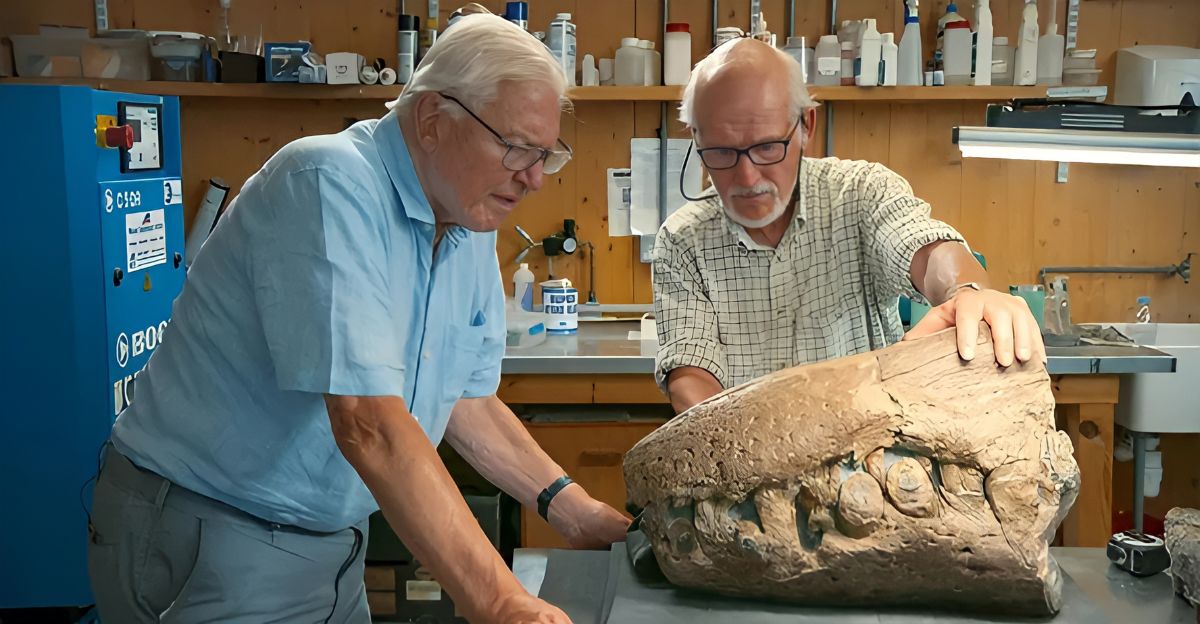
A recent discovery in Mississippi has the paleontology world abuzz. Its muddy banks revealed a “sea monster” that could change our understanding of prehistoric marine life. Geologists discovered a giant fossil belonging to a mosasaur, an ancient marine reptile, while studying rock layers.
The fossil has the potential to dramatically change our understanding of the ancient ecosystems that dominated North America. Its size and remarkable preservation have surprised scientists, forcing them to question long-held assumptions about these apex predators.
As researchers examine the specimen, new insights will likely shed light on evolution, extinction, and the ever-changing narrative of Earth’s prehistoric past.
The Accidental Discovery
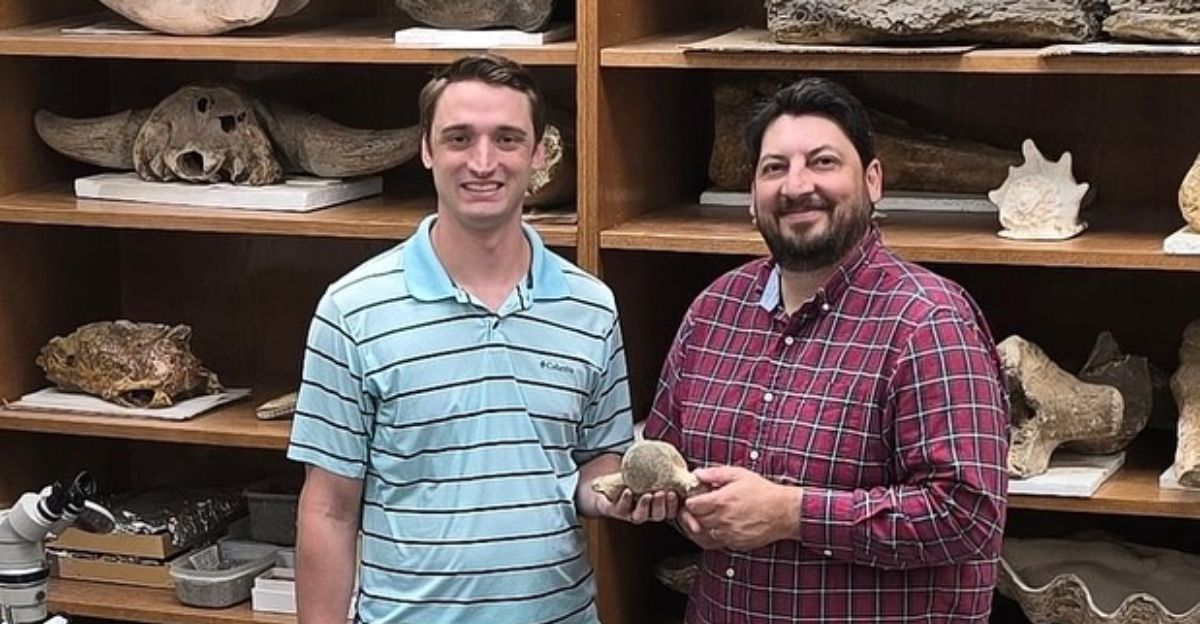
Finding this “sea monster” was a complete accident. Last month, while conducting routine geological mapping near Starkville, Mississippi, geologist Jonathan Leard misplaced a bag of fossilized seashells.
As the crew from the Mississippi Department of Environmental Quality (MDEQ) searched the ground, James Starnes, a fellow geologist and team member, noticed a massive, unusual bone jutting out of the earth.
Thus, a minor distraction resulted in a great scientific phenomenon. The bone was that of a vertebra belonging to a colossal mosasaur, a fearsome marine reptile known to have swum in Earth’s oceans some 66 million years ago, during the end of the Cretaceous era.
Anatomy of a ‘Sea Monster’
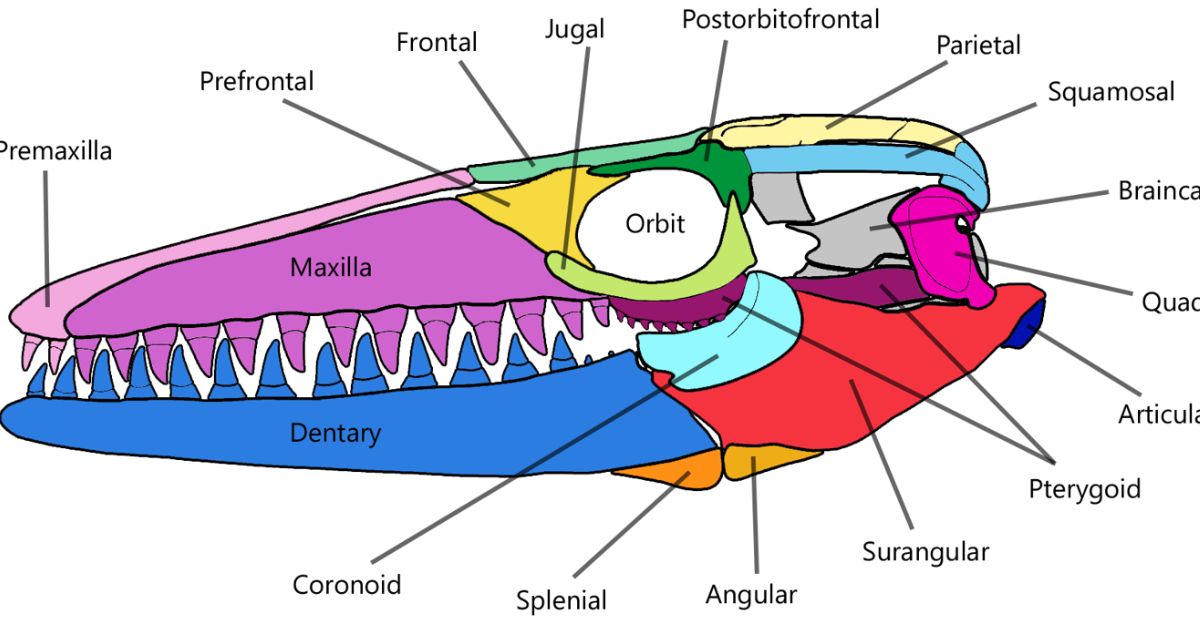
Detailed analysis confirmed that the fossil is the vertebra of Mosasaurus hoffmannii, one of the largest mosasaur species. Over seven inches in diameter, its size immediately set it apart from similar discoveries.
Although the species is known to have grown up to 50 feet long, scientists estimated this specimen was roughly 30 feet long and weighed 20,000 pounds or more, still indicating a rather large individual and certainly the largest one discovered in Mississippi.
The species is characterized by massive jaws containing 60 pointed teeth, with yet another row running along the roof of its mouth. Its anatomy ensured that it was one of the largest apex predators of the time, able to fight nearly any sea creature, from other big reptiles to other mosasaurs.
Apex Predator of the Cretaceous

Mosasaurs were the undisputed marine apex predators of the late Cretaceous, a contemporary of land dinosaurs such as the Tyrannosaurus rex, Velociraptor, and Triceratops.
Their elongated, crescent-shaped tail fins and body shapes, closely resembling their living shark cousins, made them capable of swimming at high speeds, enabling them to ambush prey. Fossil evidence shows that these marine reptiles were opportunistic feeders, preying upon fish, turtles, ammonites, and even other mosasaurs.
Their dominance in the food chain makes them critical to understanding ancient marine ecosystems. The newly discovered vertebra confirms that mosasaurs were not just large, but also highly adapted and efficient predators.
Mississippi’s Prehistoric Past
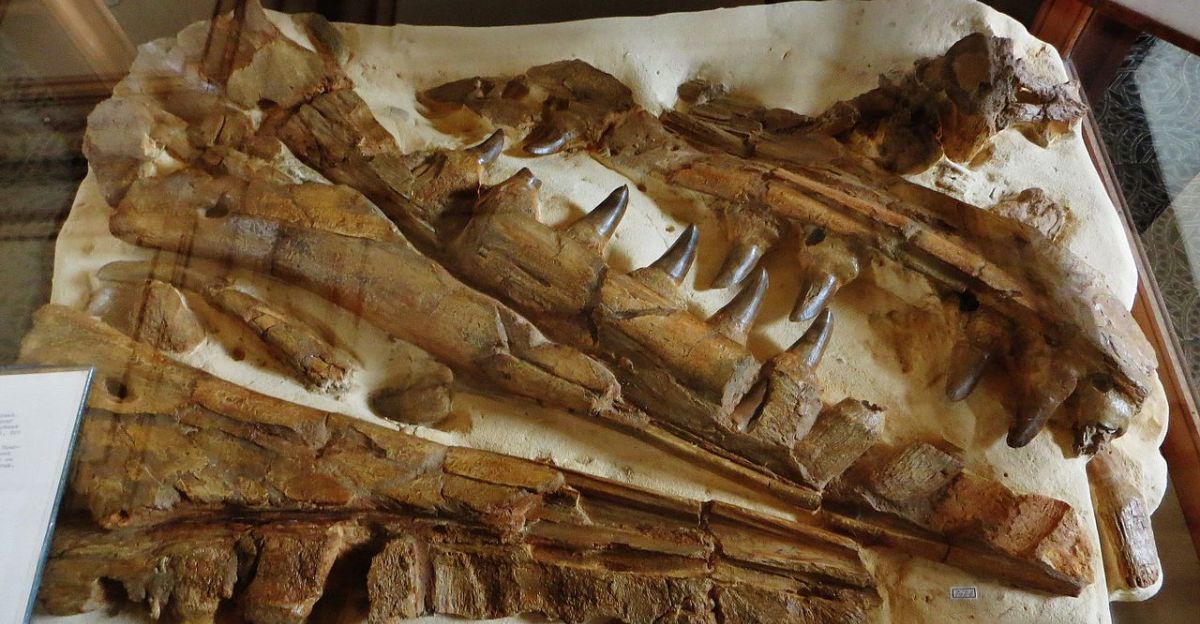
Mississippi’s present landscape of rolling hills and river valleys contradicts its ancient history as a submerged seafloor. During the late Cretaceous, the region was inhabited by a tropical, shallow sea teeming with life.
The Prairie Bluff Formation, where the mosasaur fossil was found, has a diverse history of this prehistoric marine system. Sharks, mollusks, and other marine reptile fossils have been found in this formation, providing a glimpse into a long-lost world.
The recent discovery of a massive mosasaur specimen contributes to a new and dramatic chapter in the state’s paleontological history. It emphasizes Mississippi’s significance as a window into North America’s prehistoric oceans.
Defying Scientific Assumptions
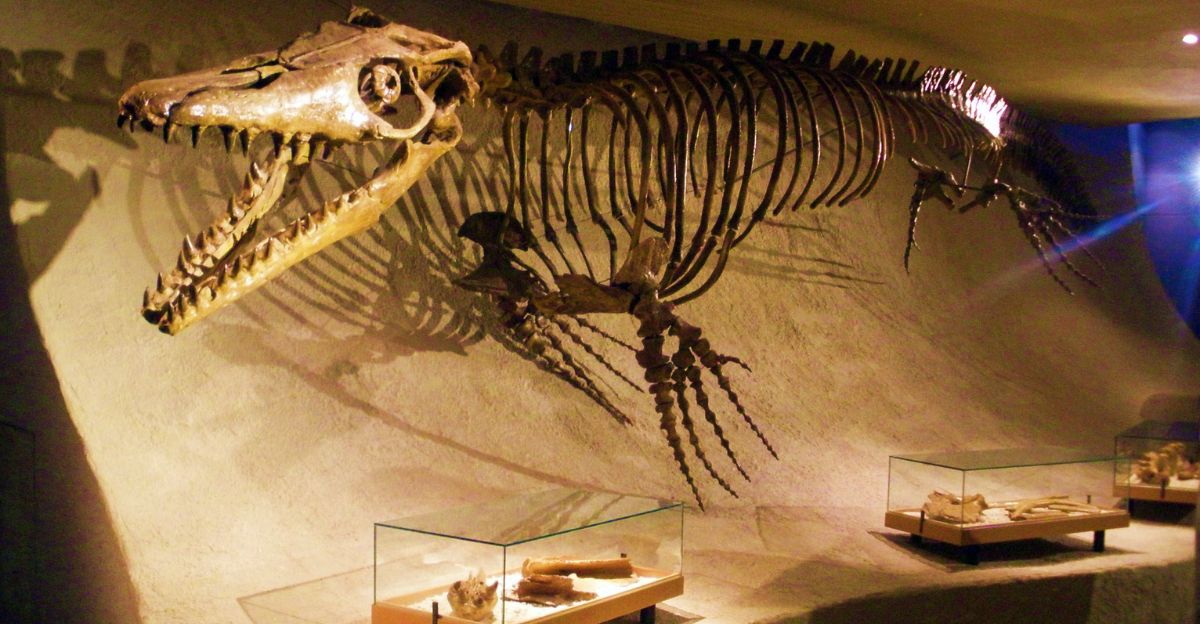
The size and preservation of the Mississippi mosasaur fossil defy long-held scientific assumptions concerning the marine fauna of the region. While large mosasaurs have been discovered elsewhere, this one marks the biggest found to date in Mississippi, perhaps even in all of North America.
Its discovery forces paleontologists to reconsider their understanding of the species’ maximum size and geographical distribution. Further, it reiterates how incomplete the fossil record is and how new discoveries can provide insights that overturn previously established theories.
Thus, scientists are beginning to see that each new sample, especially one of this magnitude, has the capability to rewrite our understanding of prehistoric diversity and evolutionary history.
Where Paleontology Meets Technology

This momentous discovery was only made possible by combining cutting-edge technology and traditional fieldwork. Geologists can identify potential sites for excavation by using advanced mapping technologies, such as 3D geological modeling.
Further, digital imaging and artificial intelligence are being used to reconstruct and examine the fossil, ensuring that information that was previously impossible to reveal is brought to light. These technological advances are revolutionizing paleontology, allowing scientists to view ancient animals in greater detail than ever before.
Thus, blended disciplines, such as geology, computer science, and biology, can lead to breakthroughs, accelerating our understanding of Earth’s past and the creatures that once inhabited it.
Rethinking Extinction
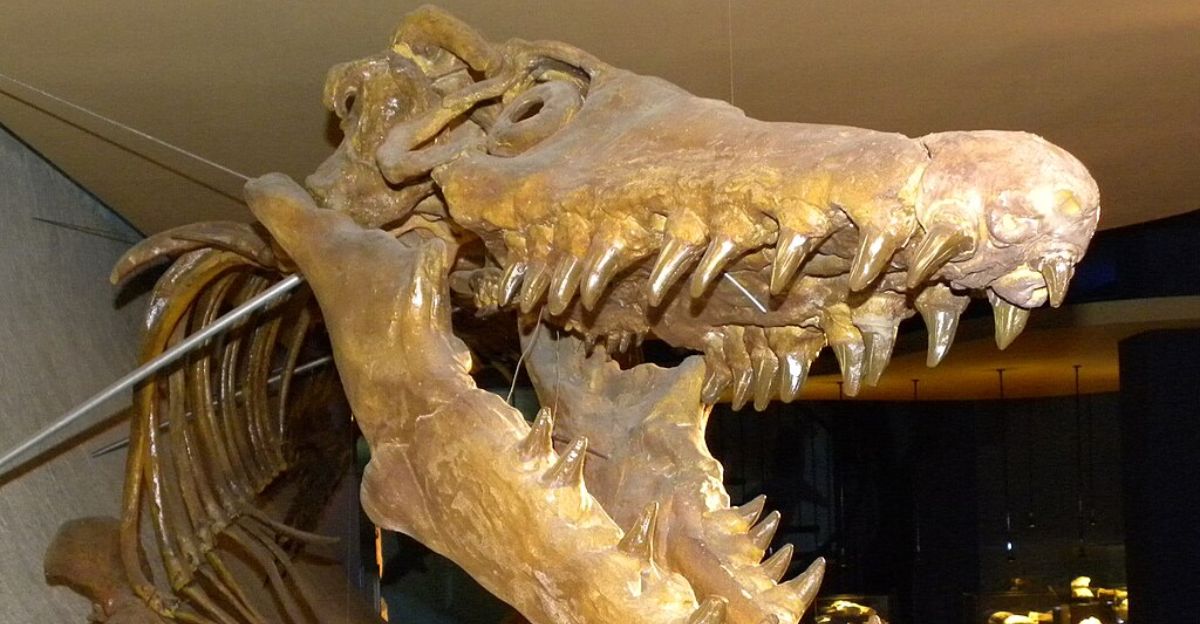
While traditional science assumes that mosasaurs became extinct in a mass extinction event roughly 66 million years ago, others argue that the story is more complex. The discovery of such a large, complete specimen in Mississippi raises questions about the purity of the fossil record.
Could isolated populations of mosasaurs have survived longer in certain regions? This way of thinking, while not well-liked, highlights the limitations of current evidence and the need for continuous discovery.
As we have already seen, the more fossils that are discovered, the more scientists will be forced to rethink established theories surrounding extinction, survival, and the resilience of ancient life.
Mosasaurs: Myth vs Science

Mosasaurs have intrigued scientists and authors for decades. Before their formal discovery, in 1764 in Maastricht, Netherlands, early colonizers and indigenous peoples believed that giant fossilized bones were evidence of mythical water beasts.
Official scientific studies into mosasaurs began in the 18th century when European discoveries challenged traditional wisdom regarding the Earth’s history. For example, the 56-foot-long skull found in Russia in 2014 informed scientists of the species’ global distribution.
The Mississippi find joins this lineage, serving as both a scientific milestone and a testament to humanity’s long-held fascination with these prehistoric reptiles and other monsters that once roamed the ancient seas.
Rewriting History: Implications for Science and Society
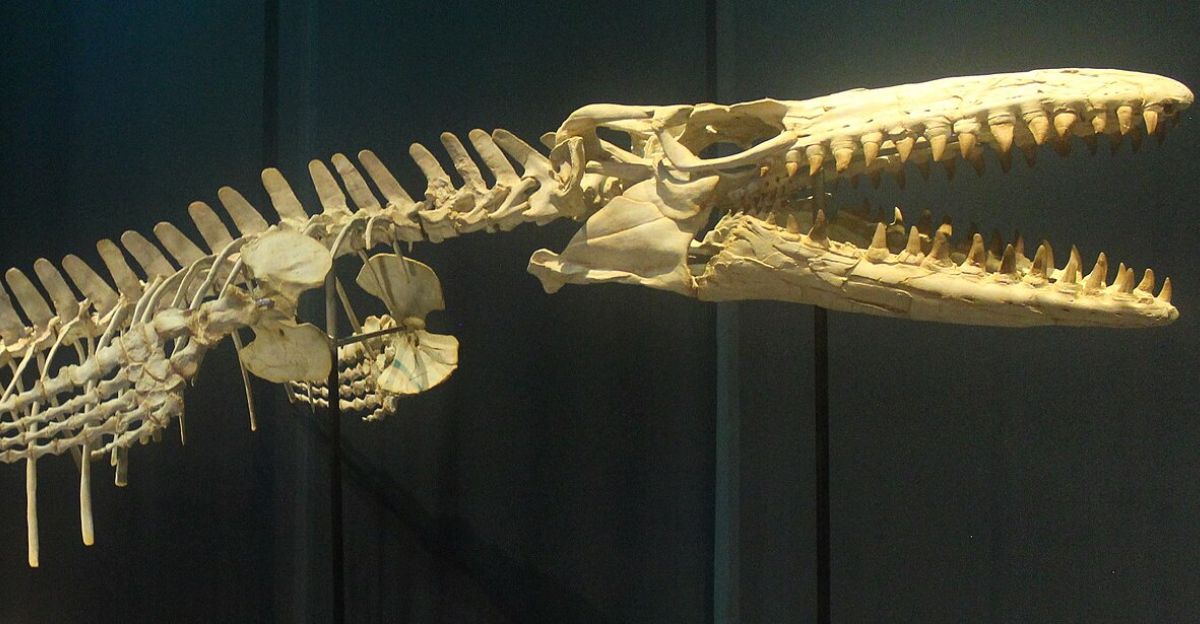
The discovery of Mississippi’s giant mosasaur is more than a scientific triumph; it’s a reminder of how much remains unknown about our planet’s past. Each new finding has the potential to redefine history, challenge assumptions, and initiate new research paths.
This particular finding illustrates the merit of curiosity, interdisciplinary collaboration, and the willingness to question established beliefs. As technology and science advance, there is greater potential to dig up and make sense of the giants that ruled Earth’s oceans.
Ultimately, these types of discoveries not only extend our knowledge but also ignite the imagination and connect us to the deep history of life on Earth.
Explore more of our trending stories and hit Follow to keep them coming to your feed!

Don’t miss out on more stories like this! Hit the Follow button at the top of this article to stay updated with the latest news. Share your thoughts in the comments—we’d love to hear from you!







